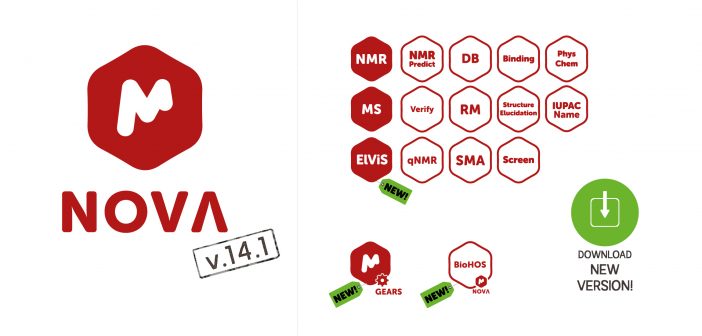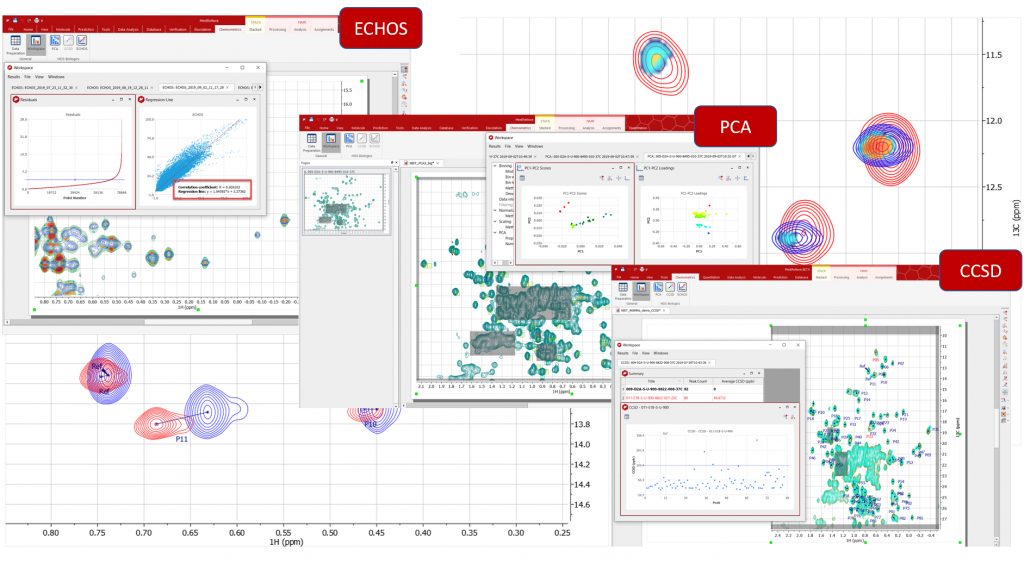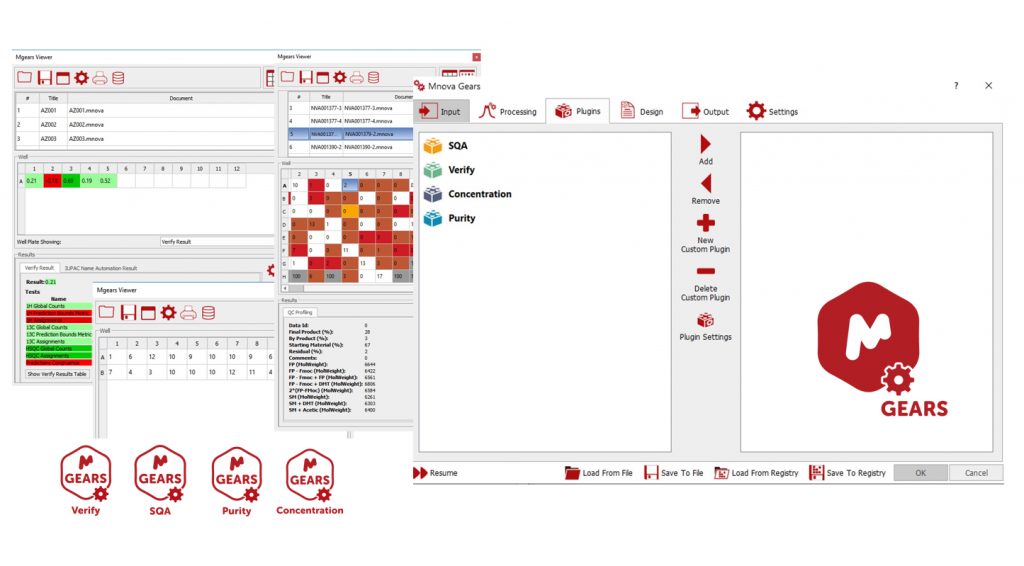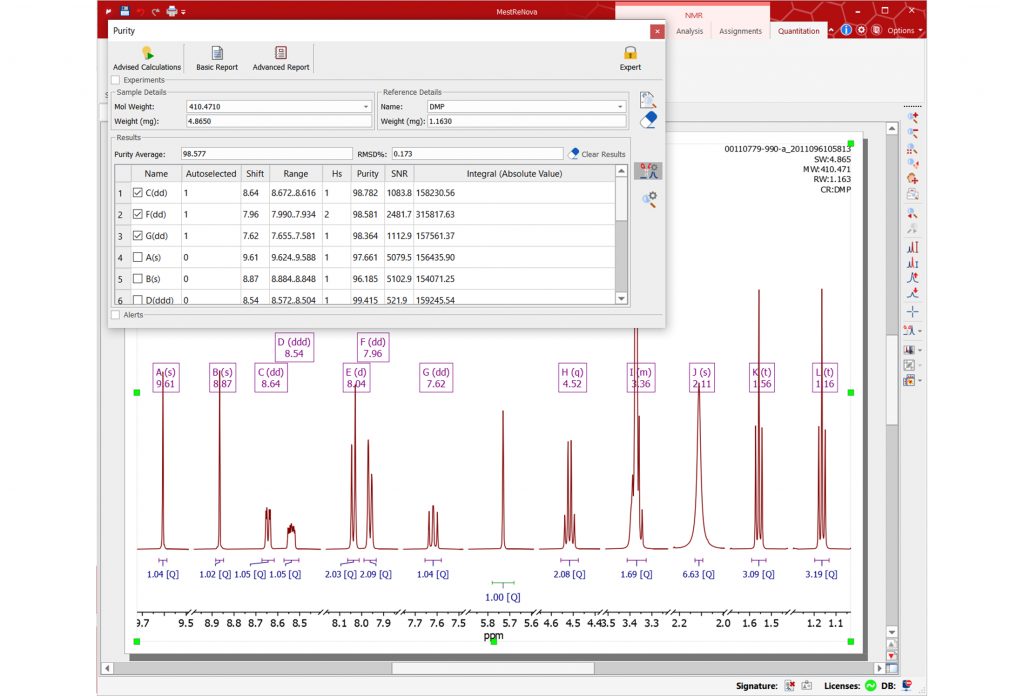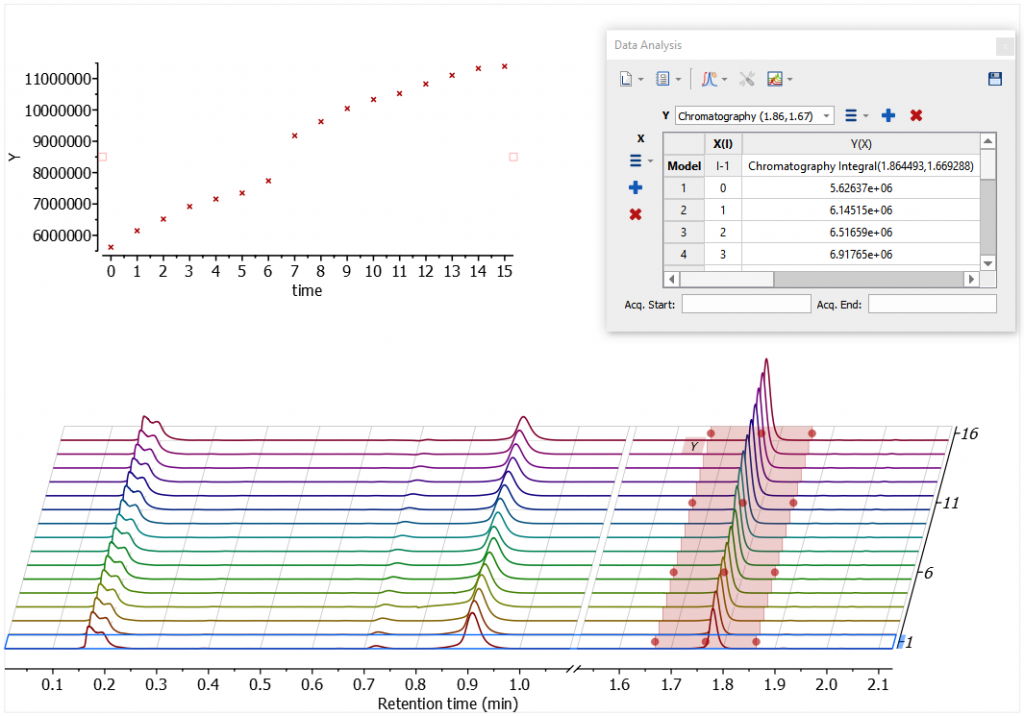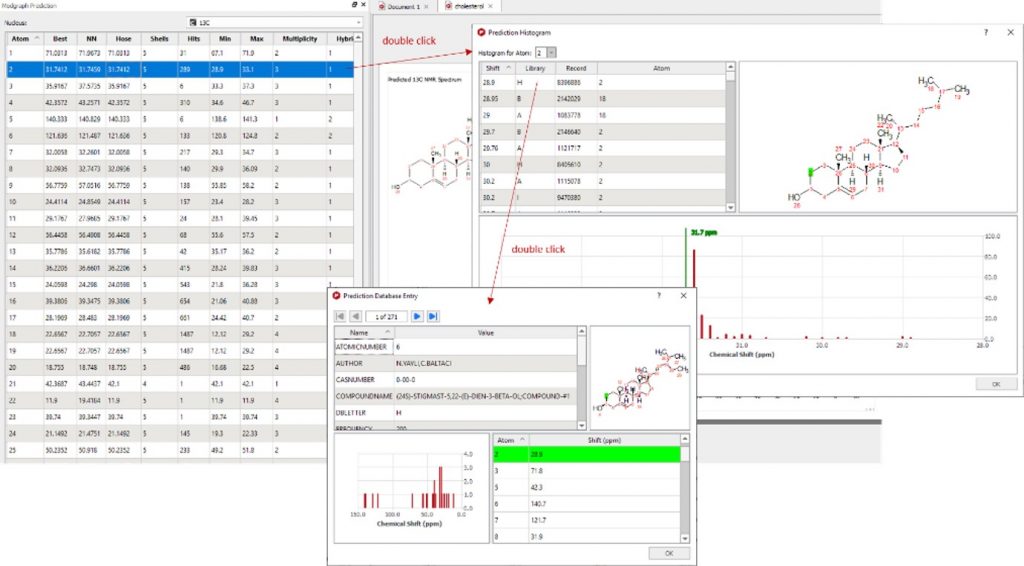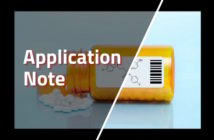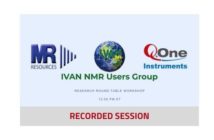Mnova 14.1 includes the option of purchasing two new plugins: Mnova Gears and Mnova BioHOS, but is also packed with new features, improved algorithms and plenty of new tricks to make your life easier!
Download Mnova 14.1.0
Read below a brief description of selected new features and two new products:
1. New Product! Mnova BioHOS
BioHOS (Higher Order Structure) is a suite of software tools designed to assist with the analysis of the NMR spectra of biotherapeutics. 2D NMR spectra of reference samples are compared with that of each test sample using a fingerprinting, or spectral similarity determination.
Specialized tools are now available in Mnova to facilitate the analysis of 2D NMR data for HOS evaluation. Read more...
2. New Product! Mnova Gears
Automate your analytical workflows!
 Mnova Gears is a software suite to build automation workflows for your analytical data, including NMR, MS and others. Using Mnova features and advanced plugins as the starting bricks, you can replicate Standard Operating Procedures or those boring, repetitive tasks we humans hate so much!
Mnova Gears is a software suite to build automation workflows for your analytical data, including NMR, MS and others. Using Mnova features and advanced plugins as the starting bricks, you can replicate Standard Operating Procedures or those boring, repetitive tasks we humans hate so much!
This modular and flexible solution allows you to automate almost any data processing and analysis, from databasing analytical raw data to reporting complex results. And you can come back to the analysis and manually change it.
Until now our team has used Mnova Gears to create custom-tailored automatizations in the pharmaceutical industry. We look forward hearing about your own automatizations. Here are a few examples of where it can be beneficial, to get your ideas running! Read more...
3. qNMR and Concentration determination: Improved usability, reporting, and many new features
The Concentration plugin now supports the PULCON method.
The qNMR/Purity plugin has been simplified, and benefits from significant, new functionality. Analyses are more robust and convenient than ever. qGSD support is improved. A host of smaller features round out the new release. Our unique spectrum suitability testing tool, SQA, can be seamlessly built into the analysis.
- “Prescribed analysis” is a one-button press option. Use our standard integration methods or choose customized to your needs.
- Reporting has been vastly improved, and is equally applicable to singleton measurements or repeats/replicates.
- Label your integration limits with the integration method, and whether qGSD reached an acceptable convergence tolerance.
- Save an expiry date and lot number of your reference compounds.
Use our standard integration methods or customized to your needs. You can be assured that the same analysis methods will be used every time.
4. Smarter manual assignments with 1H and HSQC NMR spectra
When manually assigning an atom from the molecule to a 1H NMR multiplet, the program will automatically deduce corresponding HSQC correlation even if the latter has no multiplets created. Furthermore, this process works in the other direction: when assigning a HSQC multiplet, the program will automatically assign corresponding 1H multiplet even if the 1H spectrum has no multiplets.
These new automatic deductions become very handy when assigning diastereotopic protons.
5. Data Analysis panel for stacked chromatograms
You can now stack chromatograms from MS or UV detectors. The Data Analysis Panel then allows you to define the region(s) to integrate, display the data points, and fit to a function. It is also possible to edit the X values (time values) for each trace or manually adjust each trace to better align them. The Data Analysis report and table can be pasted in the document. This functionality will be useful for reaction monitoring.
6. Import processed Varian files to Mnova
The capability to load processed Varian files has been implemented in Mnova 14.1. Phasefile files, i.e. Varian VNMR, can be loaded via:
- Drag & drop from the Operating System browser
- Mnova "Data Browser"
- "Open" dialog
7. Drill down into NMR Predictor results
For some time Mnova has allowed you to train the prediction engine using experimental assigned data to improve both the prediction accuracy and precision. What is new in this version is that, in the case of 13C NMR Prediction, it is now possible to drill down into those User 13C assigned data sets to review the information of each compound from the databases.
Access to the huge Modgraph reference library requires an additional license.
8. Use MSC to preprocess stacked spectra in Mnova ElViS
Multiplicative Scatter Correction, MSC, is now available for the preprocessing of stacked spectra. MSC is useful to eliminate scatter effects, particularly in NIR spectra. We have also added the “Invert Sign” action.
These new features are added to a host of other processing actions already available in Mnova ElViS (see image below)
Download Mnova 14.1.0
You can review other features in our Changelog section.

